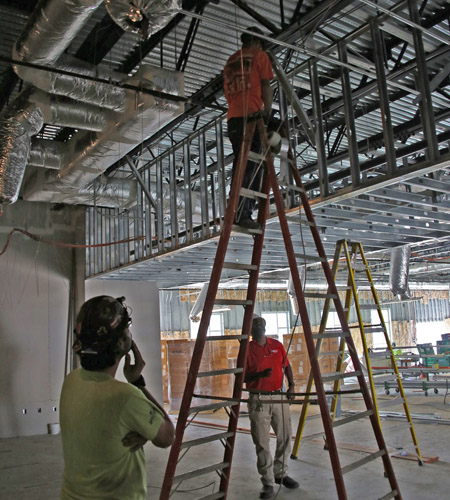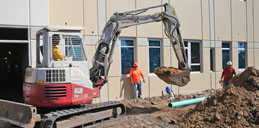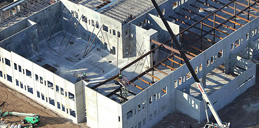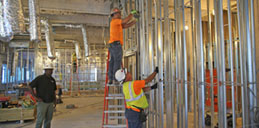3 Tips for Designing Workplaces That Support Culture, Brand, And Community
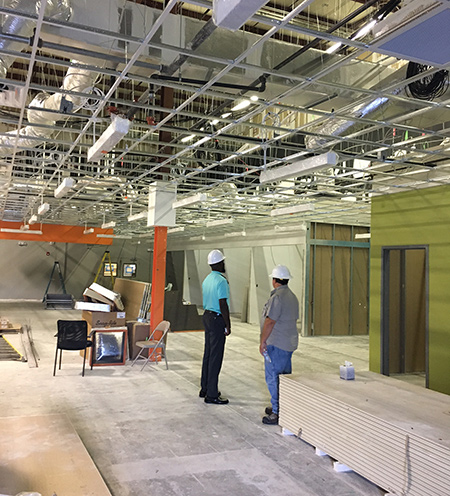 It all began in the late-90’s during the Internet revolution when start-up companies were sprouting across Silicon Valley turning the traditional commercial workspace on its head. In an effort to attract, motivate and retain a young, ambitious and talented workforce, ground-breaking Internet companies like Google, Yahoo and Amazon designed a more cohesive working community complete with its own culture that became the soul of the brand.
It all began in the late-90’s during the Internet revolution when start-up companies were sprouting across Silicon Valley turning the traditional commercial workspace on its head. In an effort to attract, motivate and retain a young, ambitious and talented workforce, ground-breaking Internet companies like Google, Yahoo and Amazon designed a more cohesive working community complete with its own culture that became the soul of the brand.
The culture change was a drastic move, a revolution of sorts, in a society where buttoned-up companies that included General Motors, Ford and Exxon led the Fortune 500 charts. We didn’t know it at the time, but this paradigm shift would mark the beginning of the end of the traditional workplace.
And today, more than ever, companies are evolving in a dynamically changing workplace environment to compete in a highly competitive marketplace. Companies of all sizes are finding the need to reinvent themselves to attract and retain top talent in their organization.
Yesterday’s pioneers are the next generation of CEO’s who are climbing the corporate ladder with a vision of designing workplaces with a culture that supports both community and brand.
Define the Culture
First, you have to define the culture. Every company has one, even if you have never defined it before. A company without a culture is like a human being without a soul. What type of corporate culture do you envision? Maybe your company has an emerging culture that needs further refinement. It starts from the top. You must have the buy-in from the CEO all the way down to your entry-level workers. Otherwise it simply won’t work.
There are four types of culture in the workplace, according to Robert E. Quinn and Kim S. Cameron, Ross School of Business, University of Michigan:
Flexibility & Discretion
Clan – The clan organizational structure is like one big happy family where leaders are seen more like mentors rather than bosses. It’s a culture where employees work together as a team to achieve the common goals and objectives of the company.
Adhocracy – Employees are given the freedom to make decisions that will make a positive impact on the company. In an adhocracy culture, leaders encourage individual innovation and creativity to find solutions to customer challenges.
Stability & Control
Hierarchy – The hierarchy culture defines the traditional workplace where rules and regulations define what employees can and cannot do. Each employee has a job to do and individual performance is critical to contributing to long-term success of the company.
Market – In this type of culture, employees are focused on meeting the needs of a competitive marketplace. They are committed to excellence and leading the industry to keep their company on top.
Design the Workplace around the Community
Once you have defined the culture, you can design the workplace around the community you want to build. Your community-centric workplace design should not only embrace your culture but foster its growth. For instance, if you have a clan culture where teamwork is critical, creating a more open floor plan will allow that culture to shine.
An architect or commercial contractor can translate the attributes of your culture into an inviting, cohesive and productive workplace. To avoid a culture shock, get your employees involved in the workplace design process. Forming a design committee and getting input from every level of the organization can help reduce pushback that could delay or impede your culture from bonding.
Reinforce the Brand
Your company culture and workplace design need to stay true to your brand. You can’t do one without the other. During the tech revolution, IBM allowed their employees to shed their iconic blue suits and ties in favor of corporate casual attire. But changing the façade doesn’t change the organizational culture or reinforce the brand. In fact, it may have the opposite effect and cause confusion among employees and clients. Your culture and workplace design should reflect your brand message.


